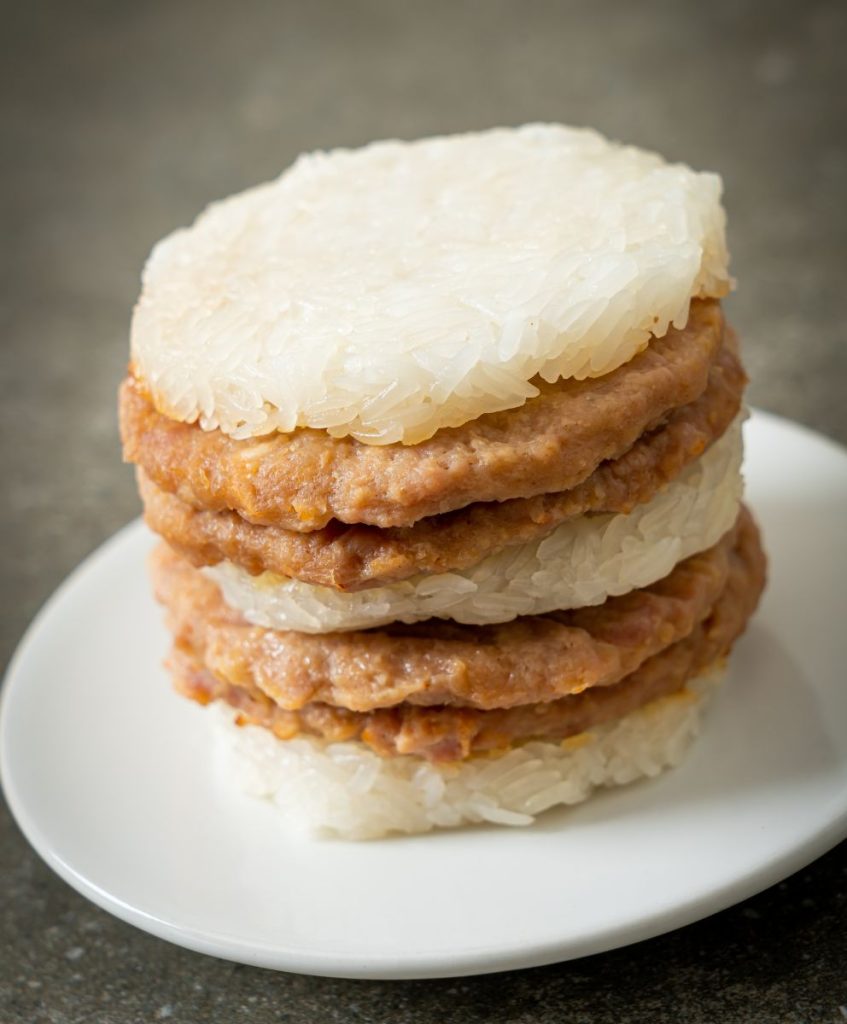Rice cakes are light, crispy snacks made from puffed rice that’s been pressed into a round or square shape. They’re naturally low in calories and come in both sweet and savoury flavours. Many people enjoy them as a healthy, gluten-free snack that’s easy to carry and quick to eat.
These cakes have a satisfying crunch and pair well with toppings like peanut butter, avocado, or fruit. Whether used as a base for a light breakfast or a post-workout snack, rice cakes are a go-to option for health-conscious eaters and those looking for simple food swaps.

Rice cakes have become a must-have in my kitchen for quick meals. Topping them with cream cheese, cucumbers, or banana slices creates a balanced snack in minutes. The combination of texture and flavour makes them ideal for busy days.
Why You’ll Love These Rice Cakes Recipe
These rice cakes are light, crispy, and full of flavour. You’ll enjoy how they melt in your mouth while still giving a satisfying crunch. They’re perfect for guilt-free snacking any time of day.
What makes this rice cake recipe even better is how easy it is to make. With just a few ingredients and simple steps, you can have a tasty, homemade treat in minutes. Great for kids and adults alike!
They’re also super healthy — low in calories, gluten-free, and made with natural ingredients. If you’re watching your weight or eating clean, these rice cakes are an innovative and tasty option.
Lastly, these rice cakes are versatile. Add peanut butter, honey, or fruits on top for extra flavour. Whether for breakfast, snack, or dessert, they’re always a good idea.
Pre-preparation of Rice Cakes
Let’s make things easy before the action starts.
- Choose the type of rice cake – This recipe covers soft, chewy Korean-style rice cakes.
- Prepare your steamer by filling it with water and heating it. Add vinegar to prevent white streaks on cakes.
- Line the steaming tray with parchment or use lightly oiled heatproof dishes.
- Sift the rice flour – This helps prevent lumps and creates a soft texture.
- Warm water – Not boiling, just hot. This helps form a smoother dough.
How to Make Rice Cakes Recipe
Ingredients
These are simple, pantry-friendly items:
- 2 cups sweet rice flour (glutinous rice flour)
- ½ cup sugar (white or brown, to taste)
- 1 cup warm water
- A pinch of salt
- 1 tsp vanilla extract (optional)
- Sesame seeds, desiccated coconut, or kinako (roasted soy flour) for garnish
Directions
Here’s a simple step-by-step to make soft, steamed rice cakes:
- Mix Dry Ingredients: In a large bowl, combine sweet rice flour, sugar, and salt.
- Add Warm Water: Gradually pour in warm water while stirring to make a thick batter. Add vanilla if using.
- Prepare Steamer: Boil water in your steamer. Line the steaming tray with parchment.
- Pour Batter: Pour the batter into the tray. Tap to remove air bubbles.
- Steam: Steam over high heat for 20–25 minutes. The top should become slightly translucent.
- Cool & Cut: Let the rice cake cool for 10 minutes before slicing.
- Garnish: Sprinkle with sesame seeds, coconut, or kinako. You can serve it warm or chilled.
Nutrition and Health Benefits of Rice Cakes
Rice cakes are a popular snack choice for those seeking light, low-calorie foods. Made from puffed rice, they’re easy to digest and are often used as a base for both sweet and savoury toppings. Below are the key nutrition and health benefits of rice cakes, broken down for easy understanding.
Nutritional Benefits:
- Low in Calories: One rice cake typically has around 35–50 calories, making it a wise choice for calorie-conscious eaters. It satisfies your craving without adding too many calories to your day.
- Low in Fat and Sugar: Most plain rice cakes are free from added sugars and fats. This makes them suitable for people watching their weight or managing conditions like diabetes or high cholesterol.
- Gluten-Free: Rice cakes made from brown or white rice are naturally gluten-free. They’re safe for people with celiac disease or gluten intolerance.
- Simple Carbohydrate Source: Rice cakes provide quick energy. They’re a convenient pre-workout snack for an instant boost without feeling heavy.
- Low in Sodium (if unsalted): Unsalted rice cakes are low in Sodium, supporting healthy blood pressure and heart health.
- Can Be Nutrient-Dense with Toppings: While plain rice cakes are low in protein and fiber, you can boost their nutrition by adding healthy toppings like nut butter, avocado, hummus, or boiled eggs.
- Whole-Grain Option Available: Brown rice cakes offer more fibre, vitamins, and minerals than white rice versions. Look for whole-grain options to improve gut health and support longer-lasting energy.
Health Benefits:
- Supports Weight Management: Rice cakes are light, filling, and portion-controlled. They curb hunger and can help reduce calorie intake when used in place of higher-calorie snacks like chips or cookies.
- Good for Digestion: Their low fiber content (especially in white rice versions) makes rice cakes gentle on the stomach. This helps people with sensitive digestion or recovering from illness.
- May Help Regulate Blood Sugar (with the right toppings): Alone, rice cakes may spike blood sugar. But pairing them with protein or healthy fats (like almond butter or cheese) can help keep glucose levels stable.
- Boosts Energy Levels Quickly: Rice cakes digest fast and release glucose into the bloodstream for a quick pick-me-up — ideal for tired moments or before physical activity.
- Helps with Portion Control: Each cake is a fixed size. You know exactly how much you’re eating, which helps with mindful eating and avoiding over-snacking.
- Versatile and Allergy-Friendly: Rice cakes are dairy-free, nut-free, and soy-free unless flavoured. They’re great for people with common food allergies looking for a safe snack option.
Rice Cake Variations
Rice cakes aren’t all the same. You’ll find varieties made from white rice, brown rice, or multigrain. Some are thick and crunchy, while others are thin and crispy. Flavoured options include sea salt, caramel, cheddar, and cinnamon. Each offers a different texture and taste, appealing to both sweet and savoury cravings.
Asian rice cakes are a whole different category. These are soft and chewy, made from glutinous rice. Korean tteok and Japanese mochi are popular examples. They can be grilled, steamed, or pan-fried, and are often used in soups, desserts, and main dishes.
How to Serve Rice Cakes
Rice cakes are best topped with nutrient-rich foods. Add peanut butter and banana slices for a sweet bite. Try smashed avocado with red pepper flakes for a savoury twist. You can also spread hummus and top it with cucumber for a refreshing snack. They’re a blank canvas—just get creative!
For a complete meal idea, use rice cakes as a bread replacement. Top with turkey, cheese, lettuce, and tomato for a light sandwich. Or try Greek yoghurt and berries for a high-protein breakfast. They pair well with proteins, fruits, and veggies, making them suitable for any time of day.
Storage Options
Store rice cakes in a cool, dry place. Once opened, keep them in an airtight container or zip-top bag to maintain crunchiness. Exposure to air causes them to go stale quickly.
Avoid storing them near heat or moisture. Unopened packs last months in the pantry. Always check the expiration date and keep them sealed to preserve taste and texture.
FAQs About Rice Cakes
Do rice cakes have gluten?
Most rice cakes are made from plain rice and are naturally gluten-free. Still, always check the label to be sure there’s no added gluten or cross-contamination.
Can I eat rice cakes if I have diabetes?
Rice cakes can cause a quick rise in blood sugar due to their high glycemic index. It’s best to eat them with protein or healthy fats to balance blood sugar levels.
Are rice cakes good for kids?
Yes, they’re a light and crunchy snack kids usually enjoy. Just pick plain or low-sugar versions to avoid extra additives.
How should I store rice cakes?
Keep rice cakes in an airtight container at room temperature. This helps them stay fresh and crunchy for longer.
